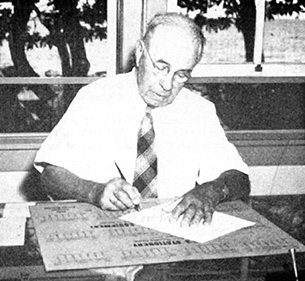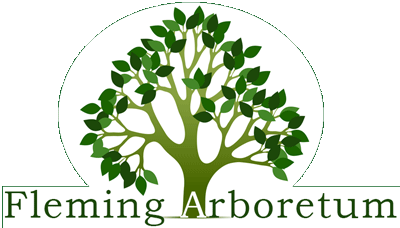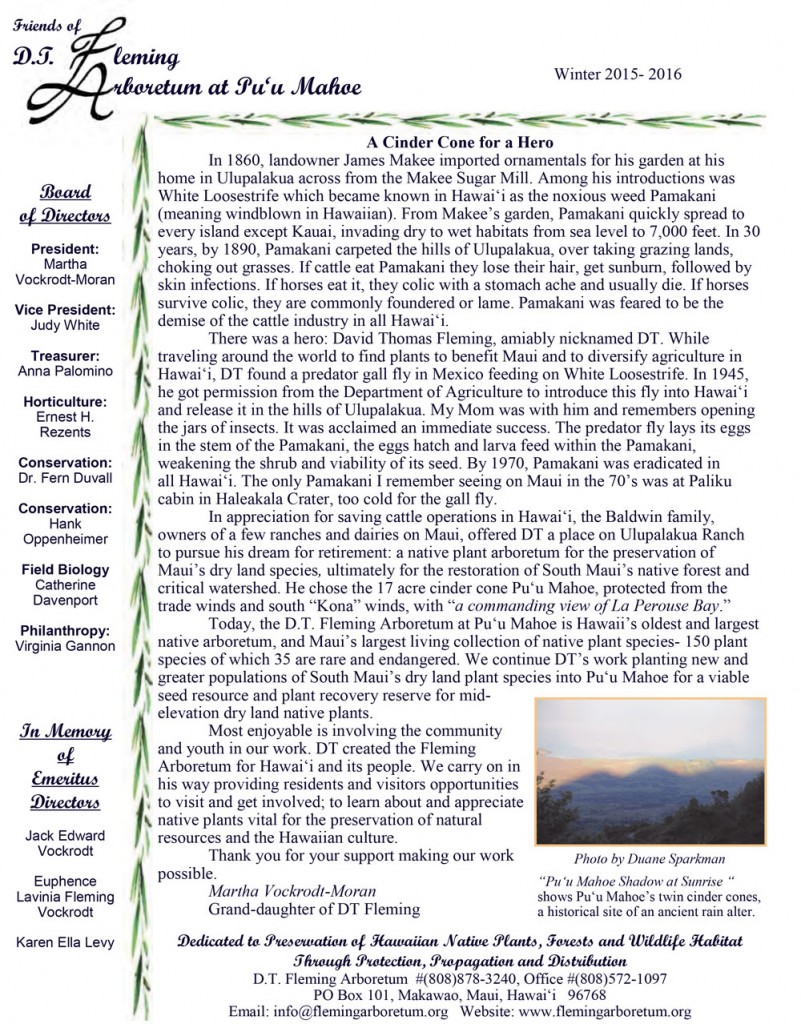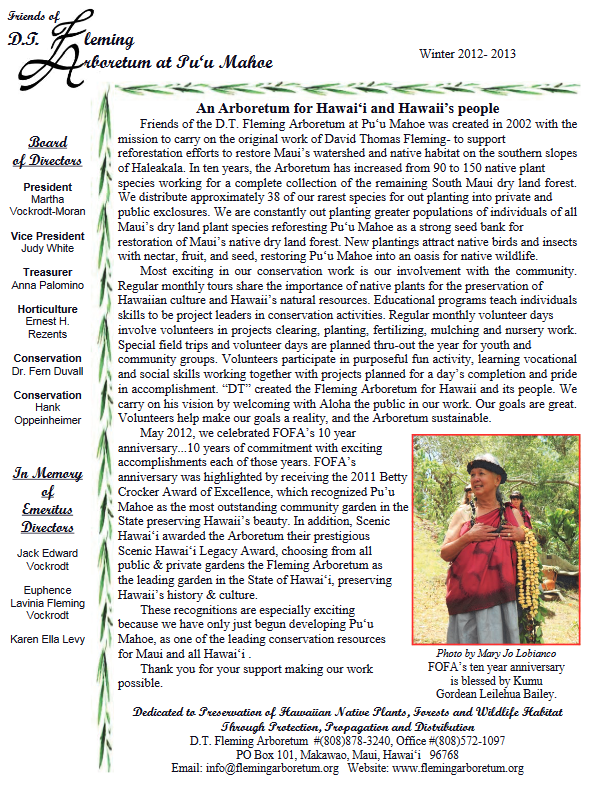History of D.T.Fleming and the Fleming Arboretum
By Martha Vockrodt-Moran
with excerpts from writings by Mary Elsbeth Fleming, sister of David Thomas Fleming 
I would like to share with you the life of a community minded man, my grandfather David Thomas Fleming…a man who worked tirelessly for his beloved Maui No Ka Oi.
By sharing David Fleming’s life and some of Maui’s history, I hope to better convey the importance of the Arboretum, a vision of my grandfather to preserve a valuable conservation resource for Hawaii.
David was 9 years old in 1889 old when the family moved to Maui from Scotland. My great grandfather was offered a job managing Grove Ranch at Hamakuapoko, today a part of Haleakala Ranch. The long bleak, cold winters and short summers of Scotland was a backdrop for intense enjoyment and appreciation for Maui.
David embraced the Hawaiian culture and quickly learned to speak fluent Hawaiian. He was an avid collector of Hawaiian artifacts which today represent a majority of the Bailey Museum collection. As a teenager, he became the protégé of the noted scientist Dr.D. Baldwin, eagerly learning botany as they hiked and went on camping trips collecting ferns and land snails.
David majored in Hydrology and Water-shed management in college on the mainland, returning home to be time-keeper at the Hamakua Ditch construction that waters the sugar cane on Maui’s isthmus. As a manager of Grove Ranch, he instigated the planting of trees to help counter drought and bring back the rainfall…many living today as a monument to his life as the Cook Pines on Giggle Hill at Kauhikoa.
In 1912, the great opportunity and challenge of his life came when he became manager of Honolua Ranch, the Baldwin estate on West Maui, the grazing ground for a few head of scrub cattle.
First after careful study of resources, water was directed from streams and gulches, providing water and electricity to the new headquarters of Honolua Ranch which was moved from Honolua Bay to Kapalua, an area more suitable for agriculture. I had always wondered why there was a Honolua Village and store at Kapalua.
Almost overnight the pineapple industry boomed. Honolua Ranch was renamed Baldwin Packers. Through the dull years of the depression and during WW2, progress was steady and sure. Side crops of watermelon, mangoes, lychee, jackfruit and aloe were planted for study as to varieties, soils, climates and methods of cultivation.
Acres of watershed area stripped of Koa and Ohia were reforested. Sandalwood and Koa were planted on the mountainside, with other varieties of indigenous trees which were dying out. Ingeniously, on 75 acres above Honolua Bay, David experimented on outplanting varieties of Ficus, a worthless wood, so to assure valuable watershed will remain forested. I will insert here that in the early 1900s there were no insects in Hawaii that pollinated the ficus. Today this project named The Maunalei Arboretum, is available to the public thru Eco Tours.
The new village of Honolua thrived…a golf course, tennis court, a moving picture house and community hall along with parks and playgrounds were created. In a single decade, a failing barren cattle ranch was turned into a cosmopolitan community.
In appreciation for this great man, Maui Land & Pineapple Co. dedicated Honokahua Beach at Kapalua as the D. T. Fleming Beach Park. The tunnels and cement flumes Fleming had built for water and electricity supply Kapalua today.
Constantly working to make Maui a better place to live, Fleming dedicated time to political, industrial, and education boards. A prominent figure on Maui, he was Chairman and executive officer of the County of Maui, a position now titled Mayor, creator and President of the Board of Water Supply, and a trustee of Maunaolu College. During his service for the County schools, highways, and recreation facilities were built and new water sources engineered…all under a balanced budget.
Devoted to the welfare of people, he believed in home ownership. As manager of Baldwin Packers, property was made available for sale at low prices. As County Chairman, he made possible the Fleming Tract in Sandhills. His own pet project created lots in Paukukalo for working people to own their own home fee-simple. Still today this legacy is remembered and appreciated by the families.
His support of the church, his happy family life, his hardy adventurous spirit and above all his personal friendships with people of all persuasions, his generosity and complete unselfishness made David Thomas Fleming one of our most beloved outstanding citizens. He was awarded the title Citizen of the Century, one of the leading 100 citizens in 100 years of the Maui County.
While working for Baldwin packers, David made many trips visiting strange and beautiful places in foreign lands, searching for new and exotic plants to bring back with him to perhaps contribute to our pleasure or economy…to help diversify the agriculture.
David always came home more and more intent on exploring unfrequented parts of our island. For him, the slopes of Haleakala had an irresistible fascination, as also did the tropical valleys on the windward side.
A favorite place was the Auwahi Forest just beyond Ulupalakua, one of Hawaii’s richest areas of native flora. Witnessing the demise of these species, his wish for retirement was an Arboretum for the preservation of endangered plants endemic to this area.
When the poisonous plant Pamakani was spreading over the pasture lands of Ulupalakua Ranch, David sought approval from the Board of Agriculture to introduce a parasite to control the weed. When cattle eat Pamakani, they loose their hair and get sunburned. Horses colic. My mother remembers being with my grandfather when they released the insects in the pastures of Ulupalakua.
The success of this biological control was almost immediate. Relieved to be rid of the pest, Ed Baldwin asked David to select for his own a piece of land-the best he could find for his Arboretum.
The site selected was the picturesque spot Pu’u Mahoe [meaning Twin Craters] seventeen acres overlooking La Peruse Bay and commanding a magnificent view of the south side of the island. The two adjacent craters had been part of the primeval forest which was dying, destroyed by cattle and drought.
In 1950, fences, water pipes were installed, a cabin built, then came planting, watering, and weeding.
David and his wife Martha often spent weekends there, working, and watching progress and growth. The walls of the crater provided shelter from the northeasterly and Kona winds. Almost everything took root and grew. The success of this project helped to earn for him the title “Maui’s genius of Plants and Soils”
Today, the D.T. Fleming Arboretum at Pu’u Mahoe is Hawaii’s oldest and largest native arboretum…protecting 92 species, 26 which are rare or endangered.
In 2002, the nonprofit Friends of the D.T. Fleming Arboretum was created to help carry on the work of David Fleming. The Arboretum needed care beyond basic maintenance. The 50 year old Arboretum needed to be restored as a conservation resource for Maui and of all Hawaii, as a strong seed bank for the preservation of Maui’s dryland species and for the reforestation efforts restoring Maui’s watershed and native habitat on the southern slopes of Haleakala. The Friend’s mission: Preservation through Protection, Propagation and Distribution.
In the last four years, Friends of the D.T. Fleming Arboretum, nicknamed FOFA, has made outstanding progress: The 50 year old infrastructure has been restored or replaced…new fences, waterlines, an automated irrigation system, updated tree signs and an Arboretum Inventory data base. The health of the trees upgraded with professional pruning and top dressings of rich composted mulch, New species have been planted for a more complete collection of Maui’s dryland forest, Greater populations of the rare species have been planted for better cross-pollination and stronger genetics. Our botanical collection has been shared with nurseries and botanists, seeds distributed for Arbor Day on Maui, Oahu and the Big Island, seedlings used in reforestation projects in Auwahi and elsewhere. We encourage community involvement by sponsoring propagation workshops, volunteer workdays and Arboretum tours. We share the Arboretum, our propagation work and FOFA activities worldwide thru our website.
Funding has been made possible by State, Federal, and Hawaii Foundation grants individual donars and volunteers
With the first propagation of one of our rarest trees, the Maui Alani, we have taken the first step saving this species from the threat of extinction. From only one viable Alani in existence, there are now 35 seedlings from the Fleming Arboretum outplanted on Maui, Oahu, and the Big Island. Along with other specimans from the Fleming Arboretum, 14 young Alani have been outplanted into a 20 acre enclosure in Auwahi. It is the ultimate to return these seedlings back to their home of origin.
FOFA sponsors volunteer workdays on the second weekend and Arboretum tours on the last weekend of every month. Our year-end annual newsletter reports our accomplishments of the year and upcoming projects.
It is an honor to share the history of the D.T. Fleming Arboretum…an Arboretum of botanical, historical, and cultural importance …an Arboretum for the preservation of Maui’s dryland species and the restoration of Maui’s leeward watershed and native habitat …the vision of David Thomas Fleming.



